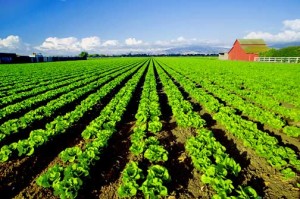It’s 6:30 pm around dinner time and like most families you tune into world news. Evening to evening you see a variety of different things ranging from earthquakes in Ecuador, to poverty in Los Angeles. However, the unfortunate reoccurring subject that is becoming a household name, shocking the world almost daily, and making headlines more often then they should; is the terror group ISIS.
In light of the various attacks in Brussels, Turkey, United States, Paris and all across the world; it is clear that the battle against this inhumane group is nothing but urgent and to put a stop to this madness is going to take a collaborative effort from the White House and nations all around the world. Secretary of State, John Kerry is quoted saying from London England that, “ We all understand, that Daesh, as it is commonly known in the Arab world, is not simply a Syrian problem, not an Iraqi problem, Daesh is a global problem and it demands a coordinated comprehensive and enduring global response.”
Who even are these people and why is this fight so urgent? “ISIS”: short for Islamic State of Iraq and Greater Syria, once started as small portion of Al Qaeda. Today their strength surpasses Al Qaeda by great measures and the terror group is implementing Sharia Law, which is rooted in eighth century Islam to establish a society that mirrors the region’s ancient past. ISIS is Currently collecting taxes and delivering government services while slaughtering prisoners and demanding ransom from many. ISIS now controls its largest city of Mosul, that was taken by them in last June and is said to be bigger then the United Kingdom (I know, scary thought right), and they has a central goal to sow civil unrest in Syria and Iraq with the intent of establishing a single, transnational state based on Islamic law and ultimately to keep the West out of the Middle East.
It is evident that this threat is crucial and poses great danger for the future. The Islamic State has claimed responsibilities for a numerous amount of murders and terror plots.
Much of this horror started about two summers ago when American journalist James Foley was abducted and beheaded on a video that was posted to YouTube, this was also the first time ISIS faced the media headfirst. Following that came a gunman holding a Sydney café hostage, the Charlie Hebdo attack in Paris, Tunisia museum shooting, Yemen Mosque bombing, Cairo embassy shooting, French train attack, San Bernindino shooting, Brussels attack, among many other instances. Loosing lives of loved ones to this group is no means justifiable and we as a human beings need to come together to stand against this.
In the most recent attack in Brussels Belgium, the fighters targeted the Brussels Zaventen airport and a metro station in the city due to Belgium’s “participating in the coalition against the Islamic state.” This most recent attack is one amongst many that clearly proves the intensity in this fight, and the fact that it moves far beyond the grounds of the Middle East.
ISIS has key strategies that allows them to advance far beyond their homeland, revolutionize terrorism and do something that sets them apart from many terror groups of the past. Currently ISIS is recruiting from the internet and using major websites such as Twitter and YouTube to gain influence and spread their message. However, ISIS is not just targeting Muslims who already live on their side of the world. The New York Times reported last month that foreigners make up half of ISIS fighting force, and a total of 4,000 come from the West. ISIS is also known for using the internet to post propaganda videos where fighters clearly speak Western languages, in order to encourage Westerners to come fight in the East.
On a good note, The United States has taken measures into their own hands by sending over many airstrikes to the Middle East. Are air strikes enough though? The US has been sending the most amounts of air strikes, in front of France, then Russia and Australia. Many critics argue that today airstrikes are in no way sufficient to defeat ISIS; Republicans believe that ground troops should be sent to fight the battle.
Obama has been long criticized for being to lenient on his stance on behalf of ISIS. However in mid December in one of his speeches Mr. president was quoted saying, “ISIL leaders cannot hide, and our message is simple: You are next.” With this being said, the public also seems to think that airstrikes are not enough, and a lot of people are not so pleased with Mr. President’s performance in the fight.
Four days Prior to the Paris attacks a poll was taken to measure the Americans take on the way Barack was handling the situation and a total of 64% disapproved on the way things were going.
Evidently, ISIS has not just had an effect on one region; they have affected the US, France, Belgium, Russia, Tunisia and many other parts of the world. With that being said it is not just a one nation fight and the United States cannot take on the entirety of this battle. The fight is too big, and we cannot get into another war alone, this is a conflict that affects nations all across the world. Power in numbers is exactly what we need to put an end to this group.
As of January, the United States, France, Germany, Britain, Italy, Australia, and the Netherlands had a collective meeting hosted by the United States’ Defense secretary Ashton Carter. In the meeting they all agreed they must do more to put an end to this mess, the group mentioned in a combined announcement that it has “expressed our broad support for the campaign plan objectives, and the need to continue gathering momentum in our campaign.” Carter also announced that there are 26 nations in the anti- ISIS coalition including Iraq, the US has mapped out an organized plan against ISIS over the next year.
Over the past few years ISIS has been able to gain control over two major cities in Syria and Iraq; these cities allow for ISIS to advance and only terrorize more. Luckily, A primary goal of the coalition is to assist Iraqi and Kurdish forces to regain control of Mosul in Northern Iraq and to help the Syrian forces in overthrowing ISIS from their self proclaimed capitol of Raqq, Syria.
The United States has also mentioned that they would be pleased to see more straightforward military contributions, with equipment and training on behalf of the Arab and Asian countries.
It is a peace of mind to know that other places around the world have also taken strides in the effort to slow down ISIS. Canada has sent about seventy troops to serve as advisors to the Iraqi security forces, Germany has also sent troops to help Kurdish forces. Italy has provided monetary support, sending 2.5 million dollars in weaponry and offered assistance in the refueling of planes for airstrikes.
The ISIS fight is seemingly so president that it is a major debate among presidential election today. Each candidate has very strong and differing views, yet the candidate we as a nation choose to be in office will have a major impact on how we defeat this group of evil. Republican candidates Kasich and Trump, although are on the same “side”, they also view the topic very differently.
Kasich wants to put in place a worldwide coalition, including NATO countries along with other Middle East nations, to become involved in fighting ISIS. While Donald has more of a “kill ‘em all” type view, and wants to ultimately bomb everything. However, on the Democratic side, Bernie and Hilary think a little differently. Bernie has said he would also like to build a collation, and would even be willing to work with Russia and Iran to defeat the extremist groups. Hillary on the other hand want to implement more allies planes and strikes.
Regardless of the differences between these candidates, what is most important is that we need to make a collaboration of nations all across world and realize that this fight is nothing short of urgent.
From what has been happening all across the world it is apparent that this fight is extremely important to protect our people, and that this issue is extremely president, innocent people cannot not be loosing their lives to this group anymore. We as the human race need to work together globally to put a stop to this injustice and to prevent future occurrences. No single country is only affected by these tragedies and that is why we need to face this head on collaboratively.







